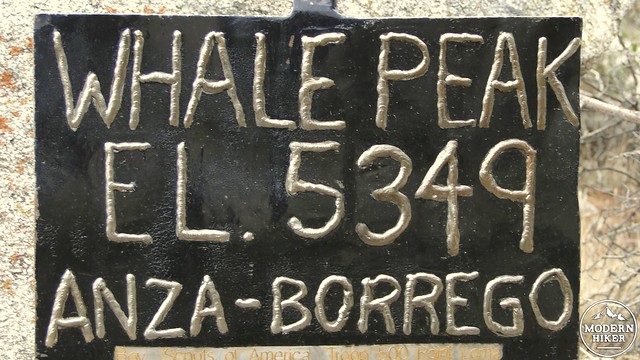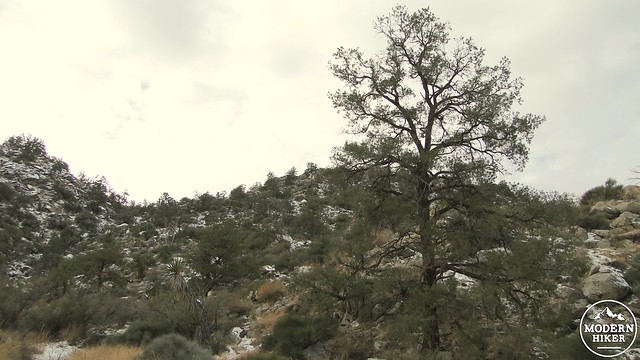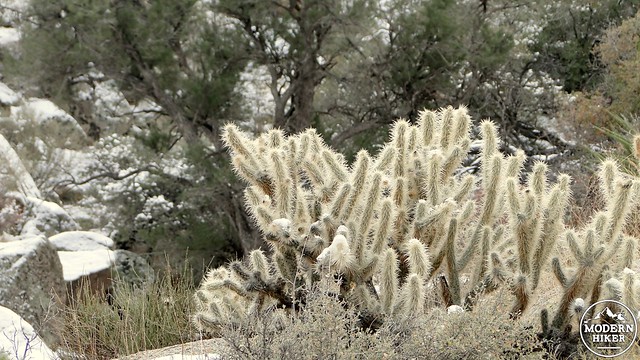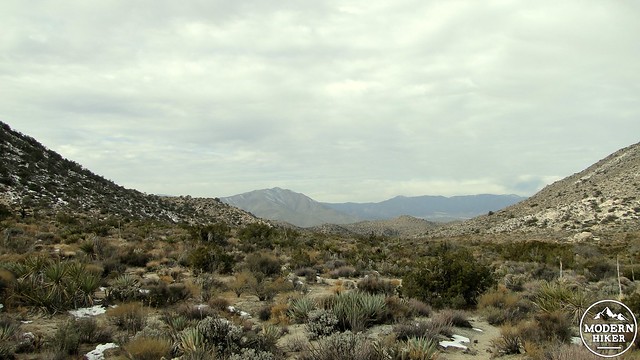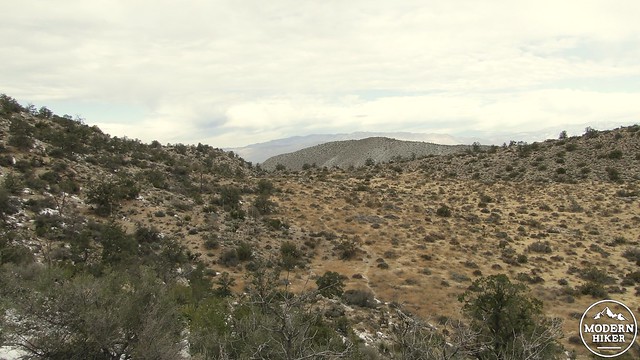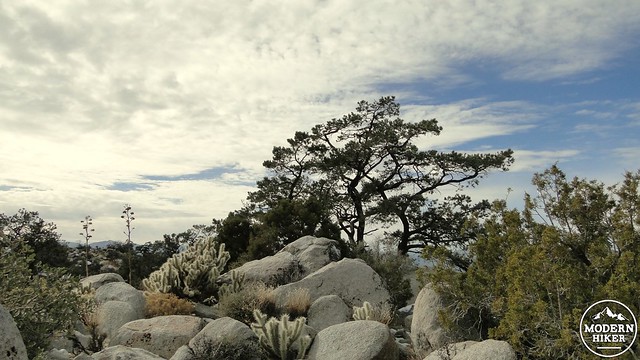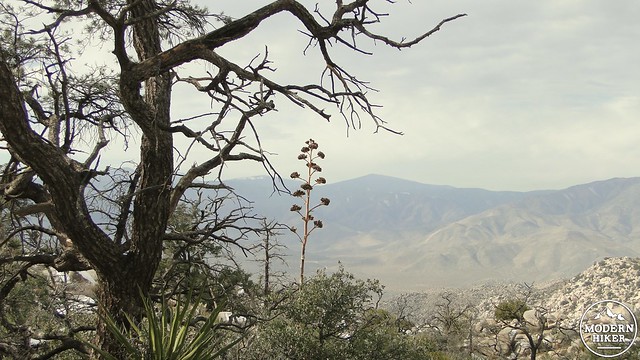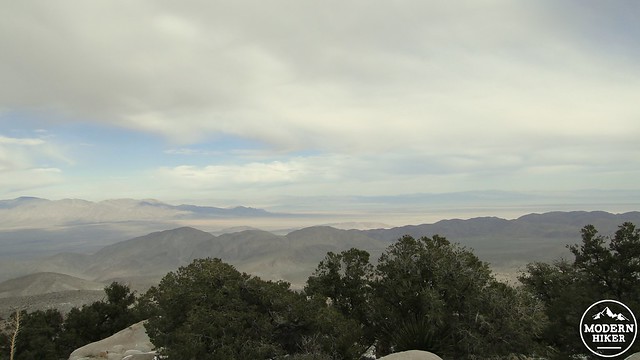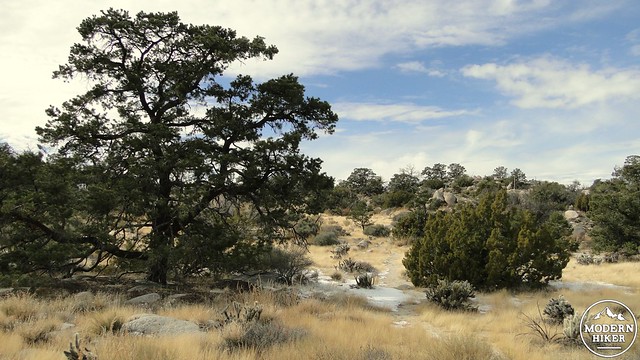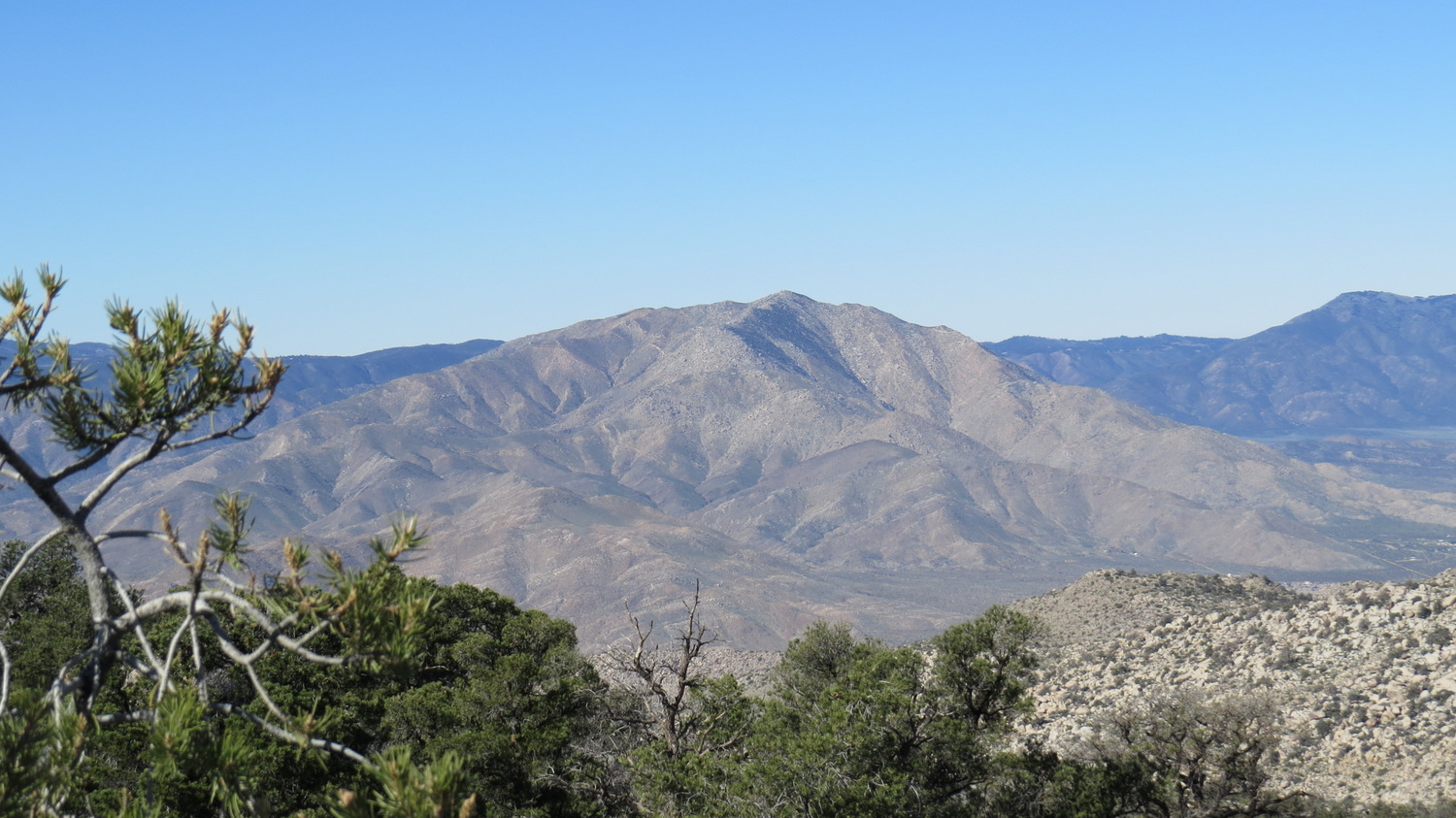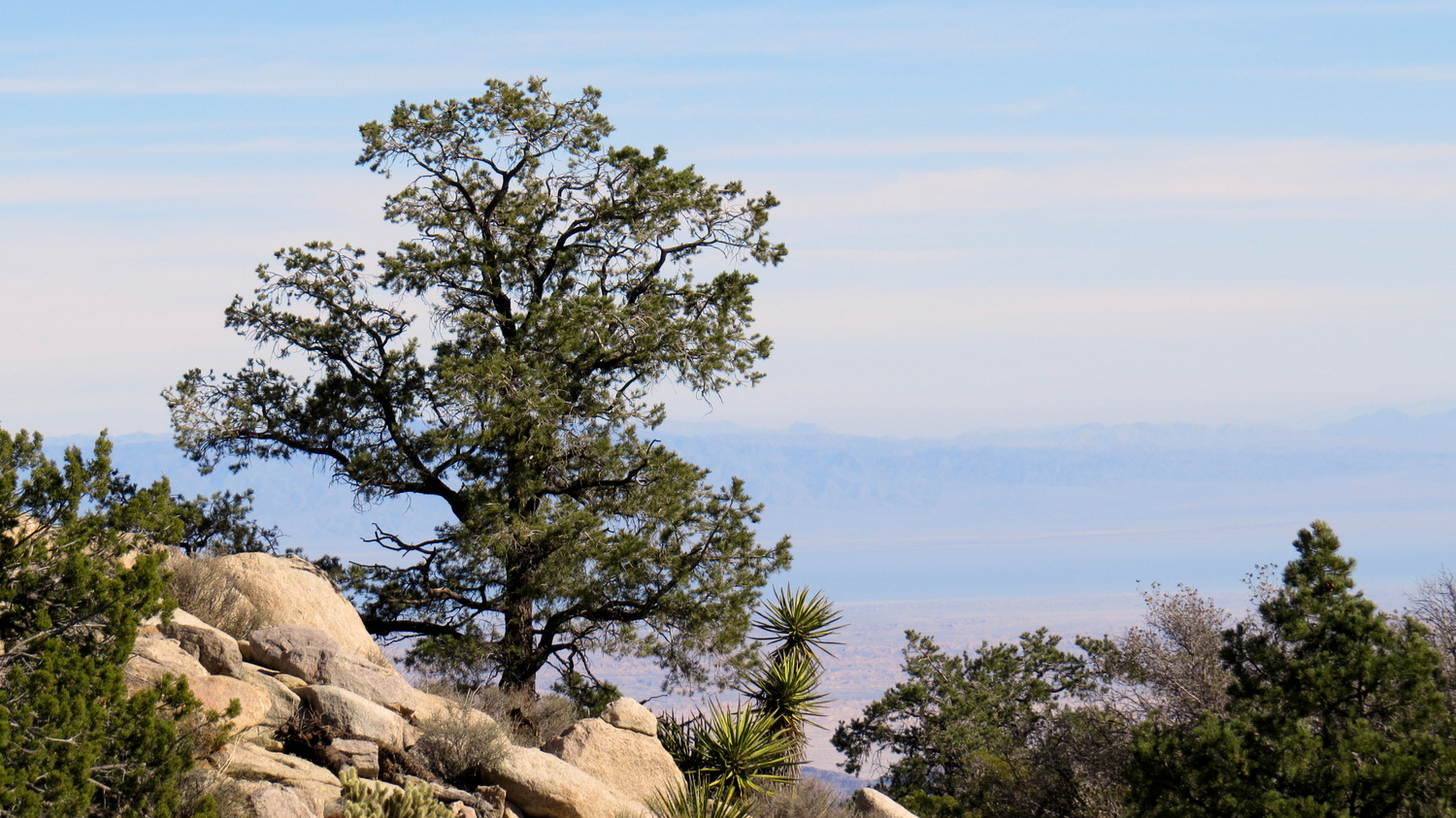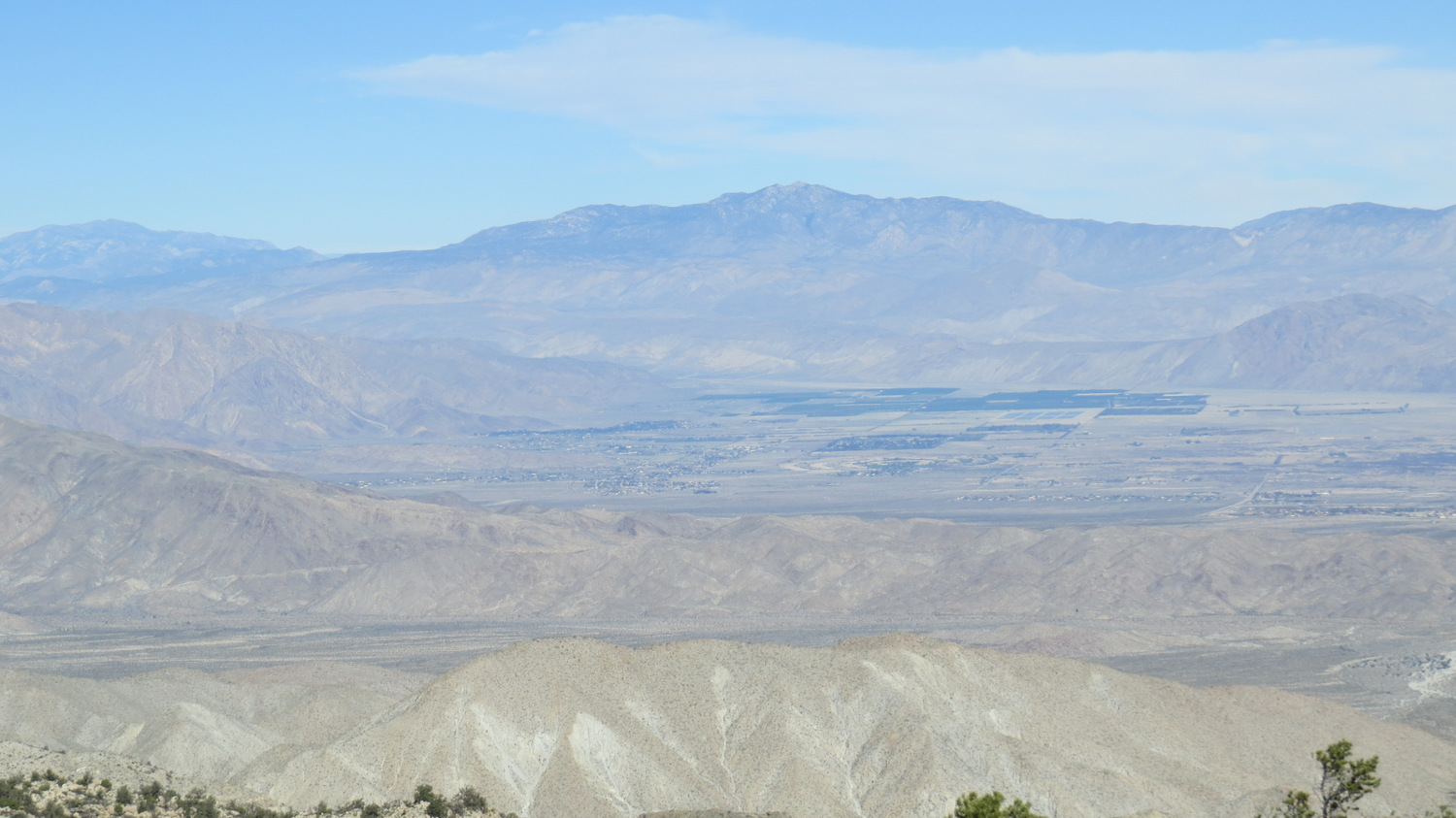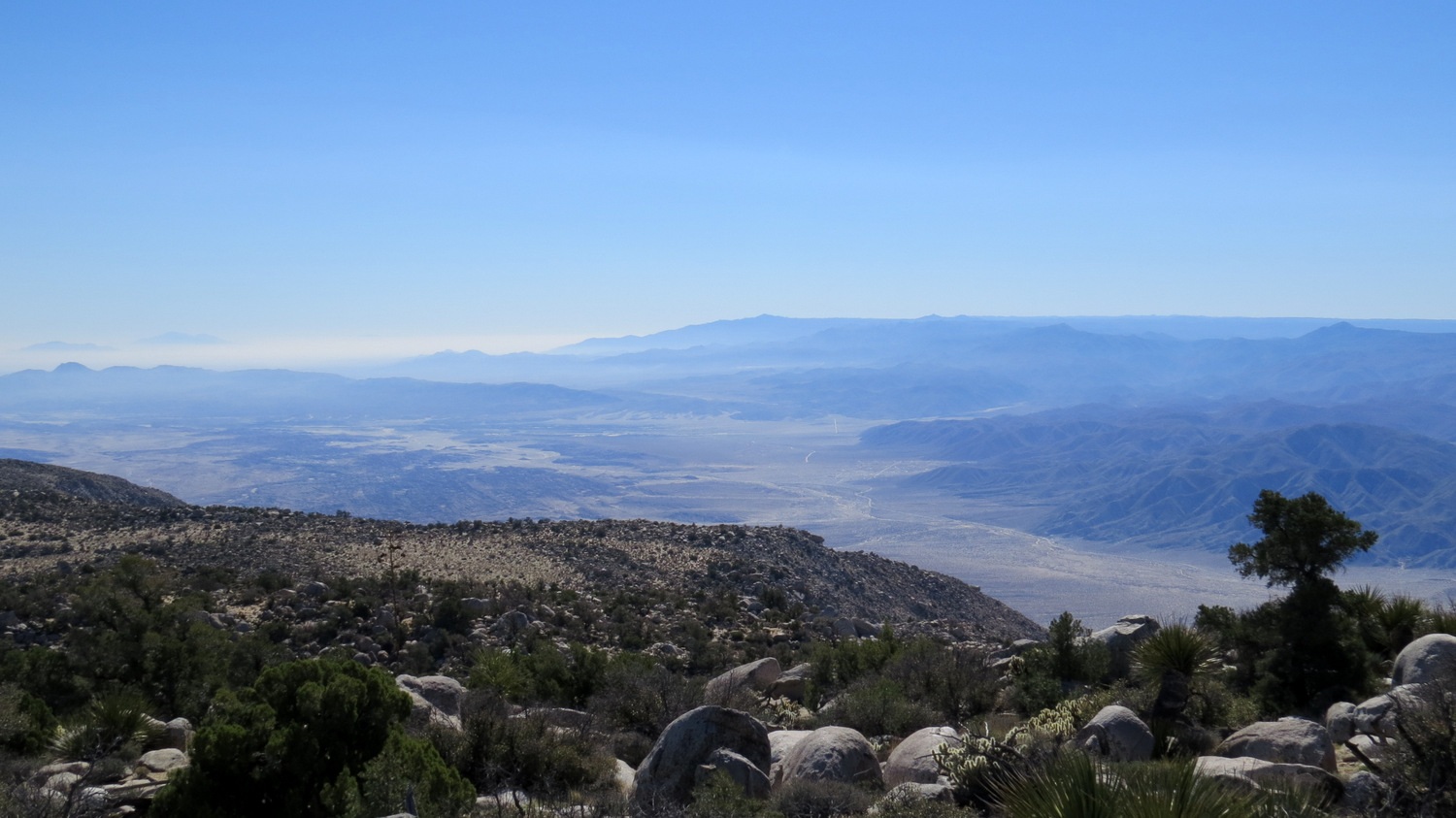Recently, while I was leading a hike with our friends, the Anza Borrego Foundation, I heard a lady refer to the desert as “miles of kitty litter and stabby plants.” She meant this in jest, as she had clearly driven many miles to follow me around and drink donated beer from Ballast Point in said kitty litter. But if one looks at the desert from a superficial and casual perspective, the endless miles of beige with wicked looking devil sticks and stabby demon plants do little to dispel this notion. As desert loves know, however, the desert does a masterful job of disguising itself to the uninitiated while it hides some magnificent secrets tucked within hidden canyons and grottos, and, in this case, a mountaintop.
Whale Peak is one of the most popular and highly visited mountaintops in Anza-Borrego Desert State Park. At 5,335′, the peak sits much higher than the endless bajadas below. With this relatively lofty elevation comes two things not commonly seen in the Colorado Desert: woodlands and snow. Along with being one of the high points of the region, Whale Peak supports an expansive woodland of pinyon pines and California juniper, which is frequently interspersed with a mixture of chaparral plants, cholla cactus, and a variety of other plants more commonly found in the Mojave Desert at locales like Joshua Tree National Park.
This kind of botanical island is a relatively rare find in the Colorado Desert, which is more commonly referred to as the “Low Desert” owing to its lower elevation and therefore hotter and drier climate. This region of desert generally ranges between below sea level and 1,000′, with some of the area peaks rising up another thousand or so feet. Whale Peak is one of a several notable exceptions to the Low Desert stereotype, as it contradicts much of what you would expect from the region. Furthermore, a visit to Whale Peak offers a good lesson in certain ecological factors responsible for its differences, including adiabatic cooling, slope effect, the rain shadow effect, and orographic lifting.
I know you want to know about the hike, but please allow me to explain those four factors. Adiabatic cooling refers to the tendency of air to decrease in temperature by 3-5 degrees for every thousand feet of elevation gained. As Whale Peak stands about 4,000′ above the Carrizo Badlands below, it is often anywhere from 12-15 degrees colder from pure adiabatic forces, which means it can support snow during the coldest winter months. As you climb Whale Peak, you will notice that the pinyon pines and junipers grow on one side of the mountain, while the other is as dry and scrubby as the rest of the desert. The woodlands can only grow on north facing slopes, where water evaporates at a much lower rate due to reduced sun exposure. This also has a tendency to produce cooler temperatures, albeit at a lower rate than adiabatic cooling. Cumulatively, while the Carrizo Badlands are a toasty 85 degrees in November, it is possible that Whale Peak could barely be scraping the low 60’s.
Finally, the rain shadow effect explains why a peak that sits at a relatively high elevation can only support a woodland of drought tolerant trees, while Boucher Hill, a peak in the Palomar Mountains that is roughly the same elevation, supports conifers more typical to the Sierra Nevada mountains. This situation exists because Whale Peak is located due east of the Cuyamaca Mountains, which drain incoming Pacific storms of the bulk of their moisture, leaving only a fraction for lands to the east. The lower lying areas of Anza-Borrego in the immediate rain shadow of the Cuyamacas get next to no precipitation, yet Whale Peak receives a respectable amount despite the Cuyamacas hogging all the water. This happens since cold air holds less moisture than warm air. As a semi-moist air mass travels up the slopes of Whale Peak and become subject to adiabatic cooling, the now colder air starts to relinquish its remaining moisture in the process known as orographic lifting. While it is bone dry in Blair Valley, it may very well be raining up on Whale Peak.
This hike begins from a junction on Pinyon Mountain Road, which is a long, winding dirt road that is probably better for a 4wd vehicle, even though you can make it in a 2wd vehicle with some caution and patience. For many years, 2wd vehicles had to stop at an obstacle about 2 miles down the road from the trailhead known as “The Squeeze.” I learned from an Anza-Borrego Desert State Park Visitor Center volunteer that the park removed some of the rocks that made the squeeze such an obstacle, and it is now possible for 2wd vehicles to pass. However, since this is not yet confirmed with the park or through visual observation, you may still need to walk from a parking area by The Squeeze to reach the trailhead. In fact, should you attempt to reach Whale Peak in a low-clearance vehicle, you may well wish to be prepared to add 4+ miles to your hike, as there is no knowing what the road will be like after the time of posting (November, 2014).
This track includes the road from the Squeeze in addition to the trail to the peak. The proper trail to Whale Peak weighs in around 4.5 miles, but the road will bring it up to about 9 miles. If you are starting from the Squeeze, walk along the road until you reach the junction. If you go left at the junction, you will pass a good campsite before coming to the trail for nearby Pinyon Mountain. Turn right, and you will follow the road that leads toward a steep wash tumbling down the side of the mountain.
To begin the proper hike, you will be climbing up this wash. You can scramble your way up the actual wash, or, if you do like I did, you can climb up along the side. It’s not a difficult ascent, but this is probably not a route for novices or for anybody who prefers a straight, easy trail. In fact, there is very little about this trail that is straight and easy, and the Whale Peak trail has a reputation for getting even seasoned and experienced hikers lost. When you make it up the wash, you will emerge at a grassy flat. There’s even a fairly clear trail leading south from the top of the wash.
As you follow the trail, you will cross this flat as it makes its way toward a slope that is dotted with pinyon pines and junipers. The trail will ascend up this slope in an oblique manner. If you come here following a cold winter storm, there’s a good chance that this slope, which faces almost due north, will still be carrying a bit of snow. If you’re here under those conditions, use a lot of caution climbing this slope. The slippery white stuff almost led me to do a faceplant into a cholla cactus, which would have been a spectacularly bad way to end the hike.
After you reach the top of the slope, the trail will next pass through a narrow, flat-ish valley. Before you do that, make sure that you bear left once you reach this valley, as a right turn will lead you down a wash that will begin descending the west face of the mountain. Not good. From here, begin walking through the juniper-studded valley to reach a low ridge. After the ridge, you’ll drop down along a ravine with heavy growths of more pinyons and junipers. Cross the ravine while sticking to the faint trail to continue traversing the slope ahead of you.
You will climb for the next .5 mile gaining a hearty 400′ of elevation. This tough stretch is made tougher by the rocky terrain and occasionally vague trail. The emerging views should mitigate the possible emergence of discontent, as the Peninsular Ranges and Granite Mountain come into better focus to the west. You will earn a wonderful reward as the trail crests another grassy flat that is one of the lovelier scenes on the entire route. You will pass through this grassy, wooded flat to another slope, which you will then ascend staircase style to second grassy flat that is as beautiful as the first. Either of these flats would make excellent backpacking spots.
At the end of the second flat, you will bear right to begin the steep push to the summit plateau. After you reach the top of the ridge, you will see first hand just how different the north slope looks from the south-facing slope. Behind you is the same dense pinyon-juniper woodland you’ve been enjoying for the past few miles. In front of you is nothing but rocks, shrubs, and cacti. You may also notice that vast expanse of Blair Valley spreading out before you as it rises gently toward the base of the Laguna Escarpment. Monument Peak and Garnet Peak are visible to the southwest, and Cuyamaca Peak pokes its head above the ridge almost due west.
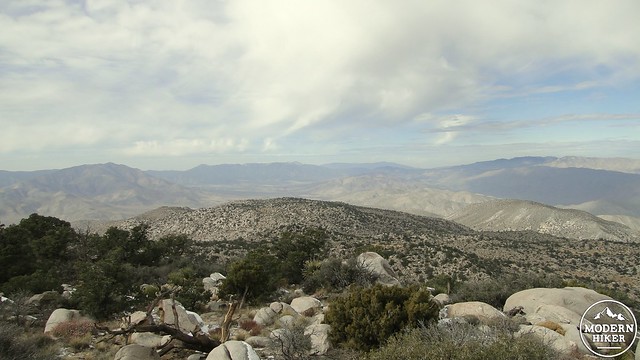
From right to left: Granite Mountain, Hot Springs Mountain/San Ysidro Mountains, Pinyon Ridge, Pinyon Mountain, Santa Rosa Mountains
You will follow the trail up this steep final push until the trail flattens out at a false summit. To find the true summit, which is marked by a metal sign, continue in a generally east direction along the trail and bend slightly to the north to find the apex. From here, views previously obscured by Pinyon Mountain come into full view. To the north, you will see Pinyon Ridge partially obscuring Borrego Valley as it rises dramatically into the lofty ridge of the Santa Rosa Mountains. Beyond that, you will see Mt. San Jacinto, which might possibly be snow-capped. You’ll continue to enjoy views south and west over the desert and the Peninsular Ranges, respectively. Only the view east is obscure, as the remainder of the Vallecitos tend to prevent really clear views over the Salton Trough.
When you have concluded your time, whether it is a dayhike or overnight trip, atop one of the most beautiful sky islands in the county, carefully retrace your step back down side of the mountain through the flats and down the slopes, past the pines and down the wash, until you reach the road, where your car will either await you or another 2.25 miles of walking back to the squeeze will await. Aside from being one of the best hikes in Anza-Borrego, this is probably one of the best hikes in the entire county, and it is easily one of the best desert hikes in SoCal. Big, bold words, but we stand behind them. Hike Whale Peak, and you will not be disappointed.
Tags: Pinyon Mountain, Pinyon Mountain Road, Vallecito Mountains, Whale Peak


